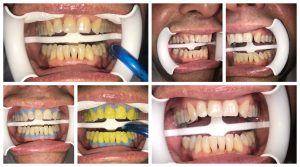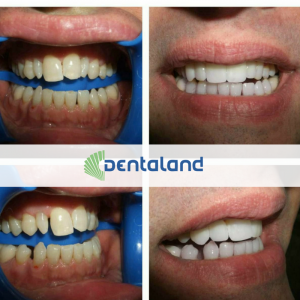What is the tooth decay?
Modern dentistry allows patients to achieve the desire to have their teeth more beautiful, brighter, whiter and shiny, which will make them look younger, healthier and more attractive. Tooth whitening is the least invasive method in which the tooth tissue is not broken and white and lighter teeth are obtained.
On the basis of the origin of the spot and the place where there is a faintness, the dental intricacies can be divided into the external and internal.
External tooth decay is found on the dental surface and arises as a result of daily consumption of large quantities of natural or artificially colored foods (beetles, blackberries, aronia, etc.) and drinks (coffee, coca-cola, blueberry juice, tea – especially black) smoking, as well as inadequate maintenance of oral hygiene, incorrect dental washing techniques.
Internal tooth decay is a consequence of the change in the composition of hard dental tissues during tooth development. The causes can be: 1) the use of certain antibiotics during pregnancy or in early childhood (tetracycline colic), 2) the use of large doses of fluorine preparations (teeth fluorose).
Special form of internal pain, which occurs in one or more teeth, can be caused by: 1) injuries (tooth) of the teeth, 2) using various medications and pastes during the treatment of teeth – endodontic therapies of teeth, and 3) after placing some fillings (amalgam plombe).
What should be known before teeth whitening begins?
Before applying the procedure of bleaching or tooth bleaching, it is necessary to cure all carious lesions, remove soft and firm dental deposits, cure the gingiva (inflammation of the gum), and if the treatment of teeth has already been done (endodontic treatment), it is necessary to make an X-ray, by checking the quality and type of channel filling, and in case of inadequate restoration, repeat the treatment of the teeth.
It is important to inform patients that bleaching, crocheting and bridges can not be bleached by teeth whitening, and that their replacement can be done from 7 to 14 days after bleaching.
In addition, it is important to note that teeth whitening is not recommended to minors, pregnant women and nursing mothers, persons undergoing orthodontic treatment, and when there is advanced periodontitis.
How is the procedure of bleaching (bleaching) of the teeth performed?
The procedure of bleaching (bleaching) of the teeth can be performed by an external and internal method.
External tooth whitening (tooth whitening) involves the setting of bleaching gels to the surface of the teeth, with the most commonly treated tooth or front teeth, but individual teeth can also be treated.
Bleaching is mainly performed in a dental office, with high concentration gels, under the control of a dentist, with the desired nuance of teeth reaching after one to two treatments.
Internal tooth whitening involves the setting of teeth whitening gels directly into the tooth, during repeated repeated visits to the dentist. This method applies exclusively to endodontically treated teeth.
In our clinic we apply teeth bleaching by external and internal method, individually or in combination, depending on the case.
What is the success of different methods of teeth whitening?
External bleaching gives excellent results in over 90% of cases, but it should be emphasized that there are people in whom bleaching does not produce significant results.
Internal bleaching is successful in 90% of cases, with the need to emphasize that the results remain the same over a longer period of time. We can say that great success is achieved in the bleaching of individual teeth that have suffered a trauma or are endodontically treated. Something less of a success is achieved when bleaching teeth whose coloration was caused by locally used medicaments, cements or metallic fillings.


Combined treatment: composite facets are placed on the upper teeth, and teeth whitening (bleaching) are made on the lower teeth.


